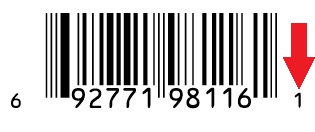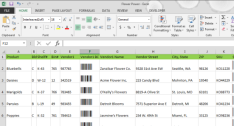
Doing the Math
A check digit (also called a check sum) is used to ensure accuracy: to 'check' for errors. In general, check digits are a single digit computed from the other characters in the string of numbers. The digit on the far right of a UPC barcode is the UPC check digit.
All UPC (Universal Product Code) barcodes include a modulo-10 check digit. The UPC check digit is the twelfth digit, located to the far right of the UPC number. The first 11 digits in a UPC barcode are the assigned company prefix and the company-assigned product number. The 12th and final digit is the UPC check digit.
Calculating the UPC check digit involves an unusual algorithm. The easiest way to figure out a UPC check digit is to use our free Excel spreadsheet, though it is possible to work it through on paper.

Want to give it a try on your own? Grab a calculator! Our example barcode data is 69277198116.
- Add the digits in the odd-numbered positions (first, third, fifth, etc.) together and multiply the total by three:
6+2+7+9+1+6=31 31x3=93 - Add the digits in the even-numbered positions (second, fourth, sixth, etc.).
9+7+1+8+1=26 - Add the two results together:
93+26=119 - Now what single digit number makes the total a multiple of 10? That’s the check digit.
119 + 1 = 120 - 1 is the check digit. The full UPC number is now 692771981161
UPCTools is the software you need to create UPC, EAN, ISBN, JAN and ISSN barcodes.

